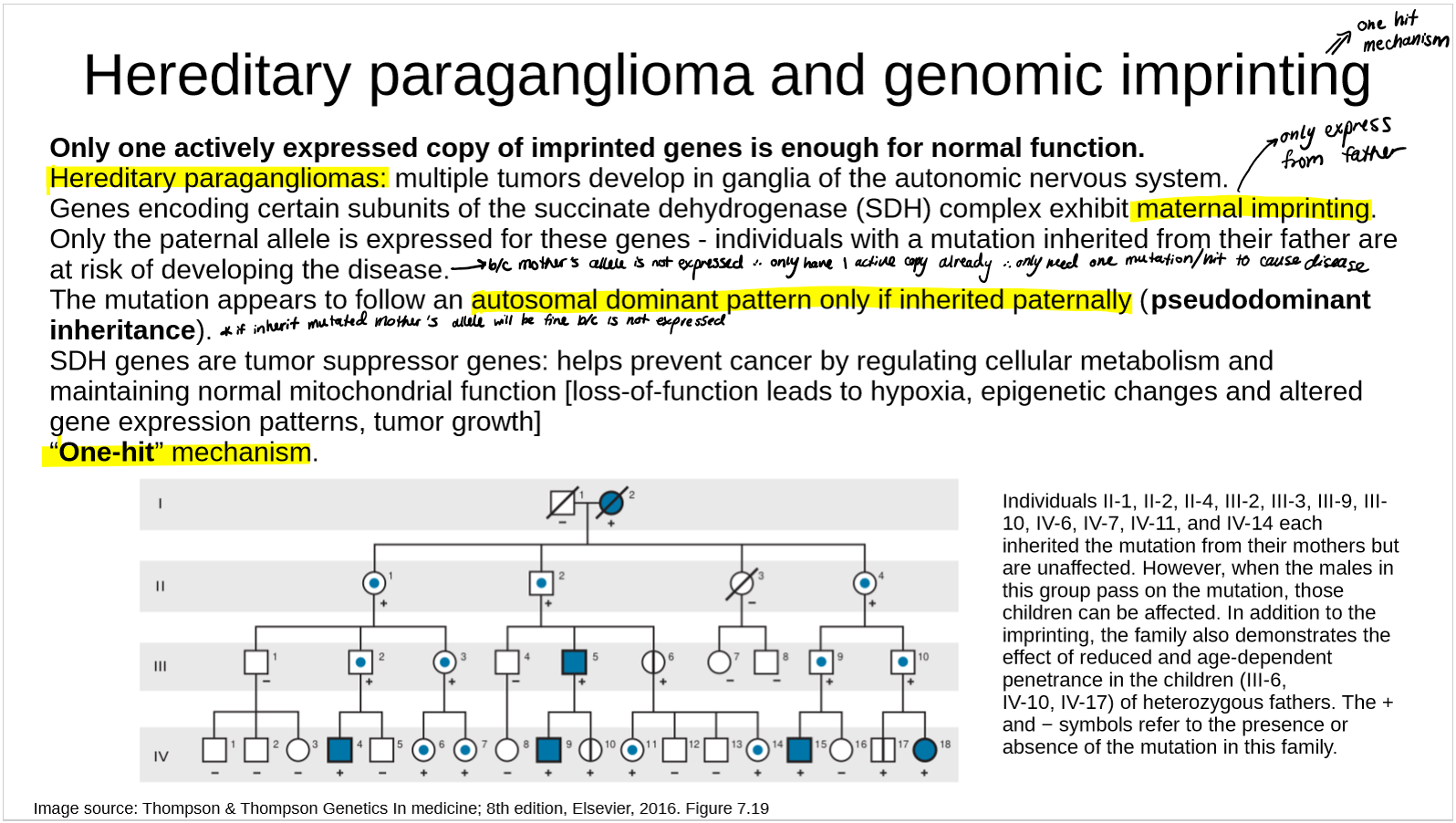week 8b; cancer genetics
1/31
There's no tags or description
Looks like no tags are added yet.
Name | Mastery | Learn | Test | Matching | Spaced |
|---|
No study sessions yet.
32 Terms
what are the characteristics of cancer cells
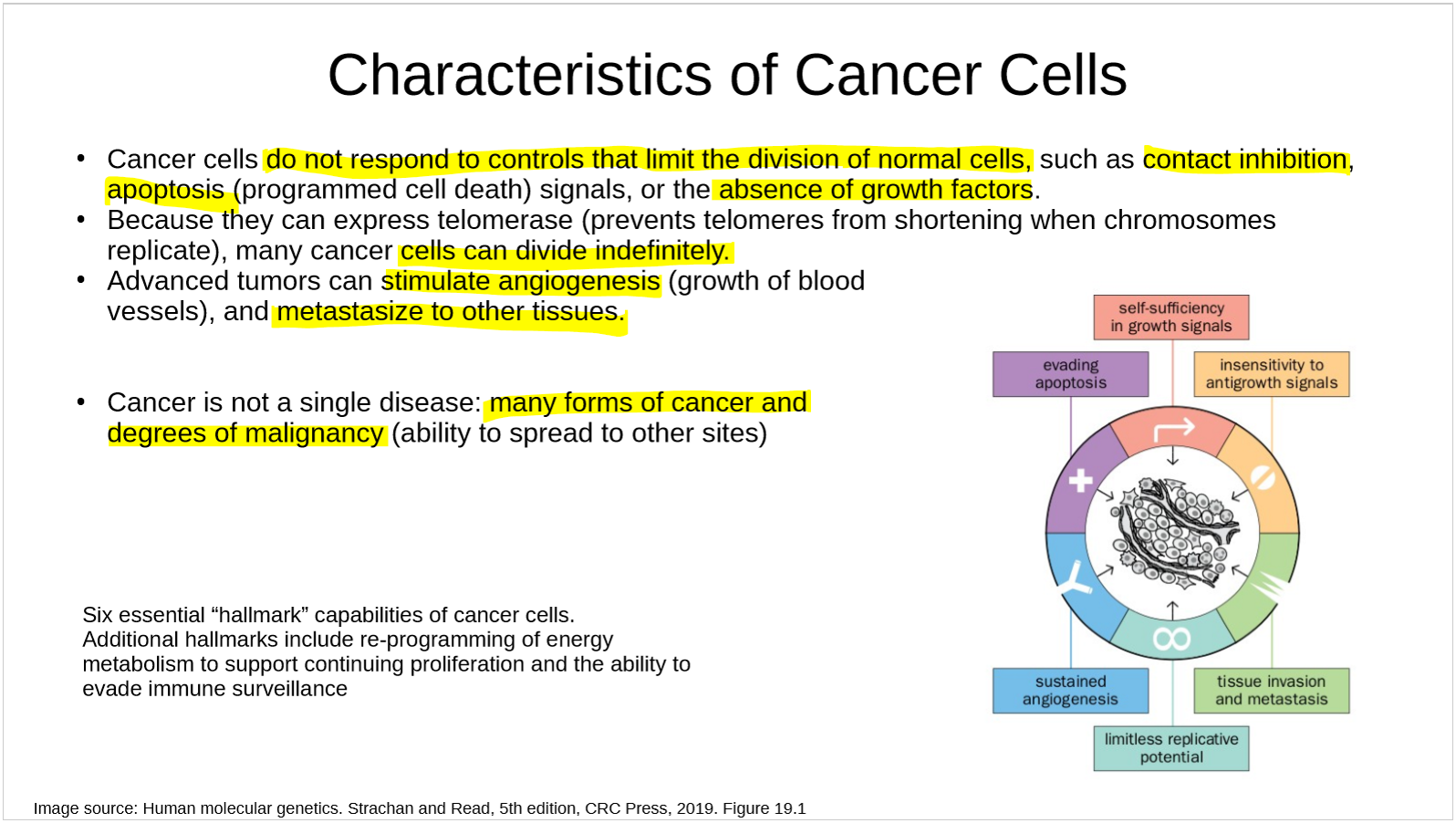
describe genomic instability of cancer cells
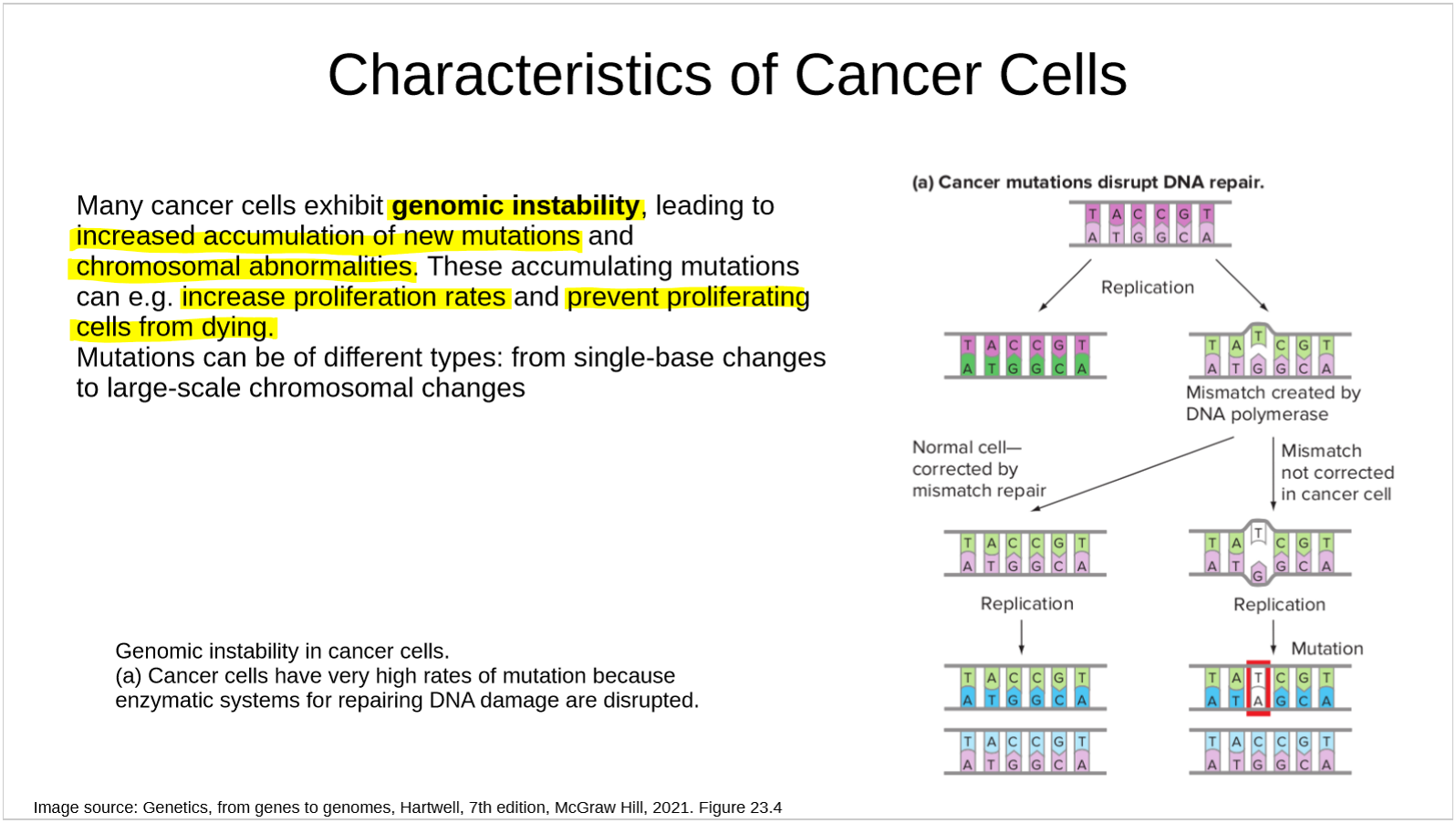
what cell type does cancer originate in? how does cancer originate?
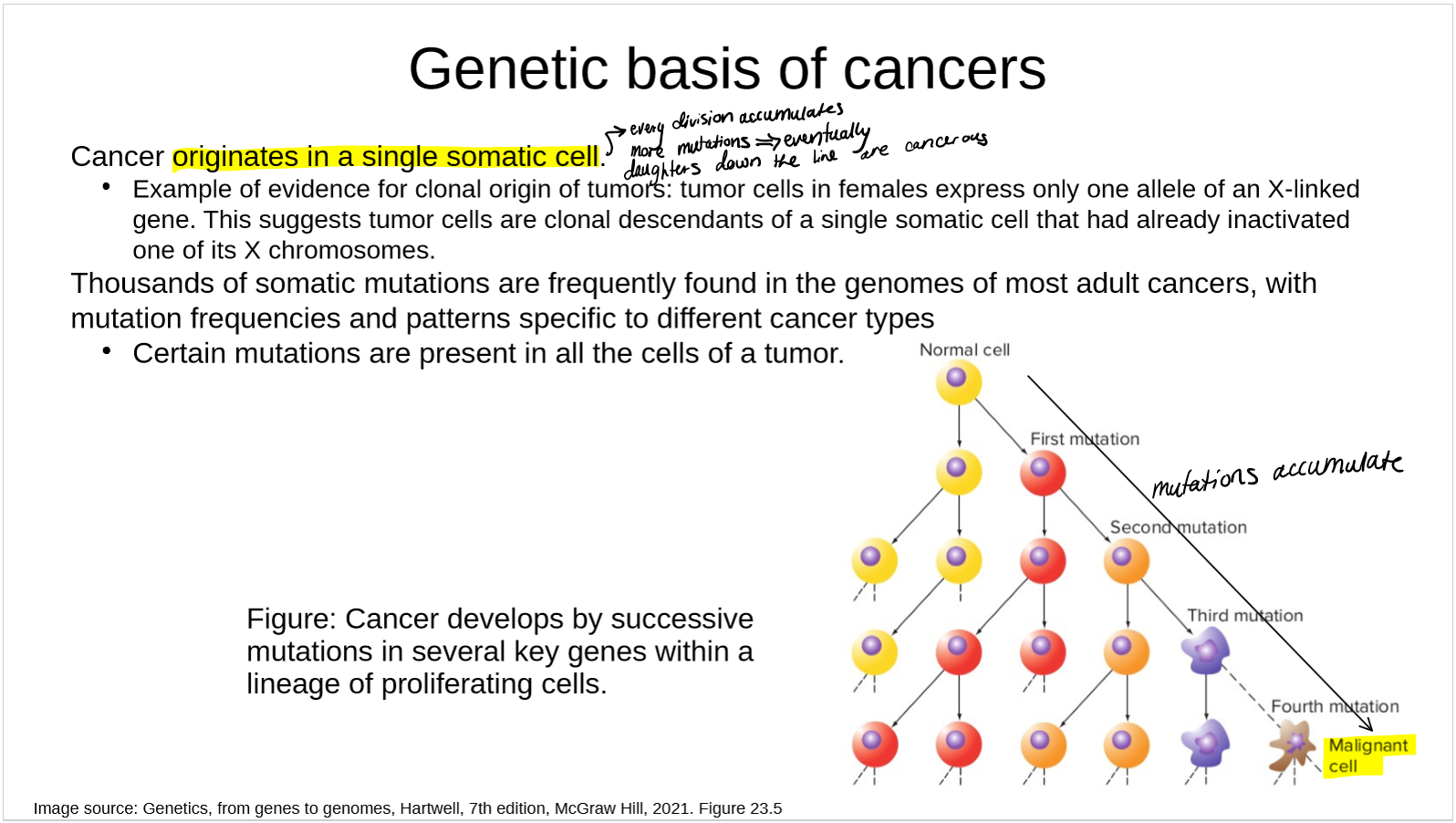
what is a heterogenous tumor mass
A heterogeneous tumor mass evolves as new mutations
arise, while old ones remain
describe the genetic changes/patterns that cause cancer
Genetic changes in cancer may occur in a linear and/or branching pattern.
branching pattern: diff mutations in each mutation
In many tumors, cell lineages branch when they acquire new mutations, which may accelerate or accompany metastasis or other cancer phenotypes
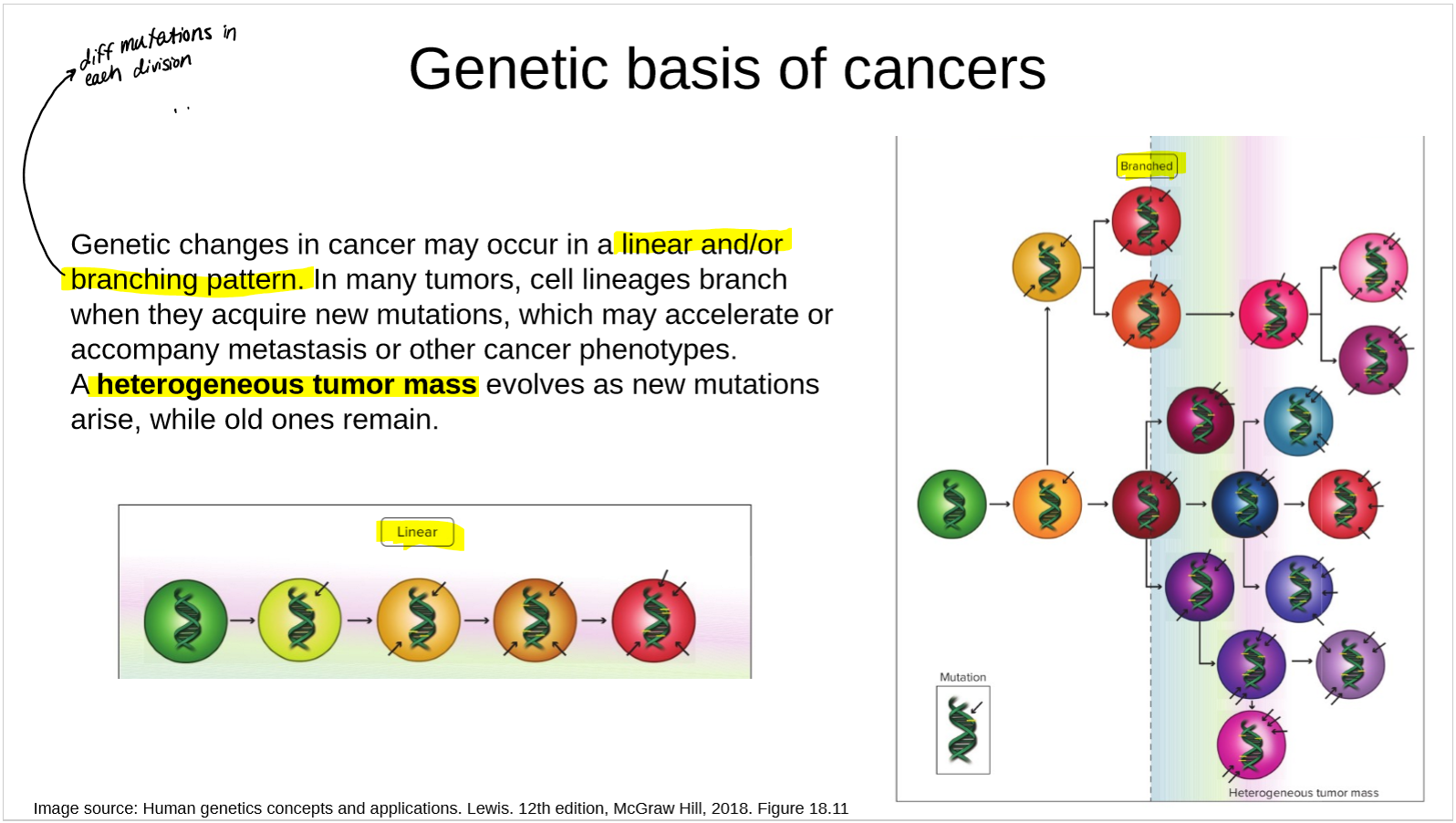
what is the cancer genome atlas
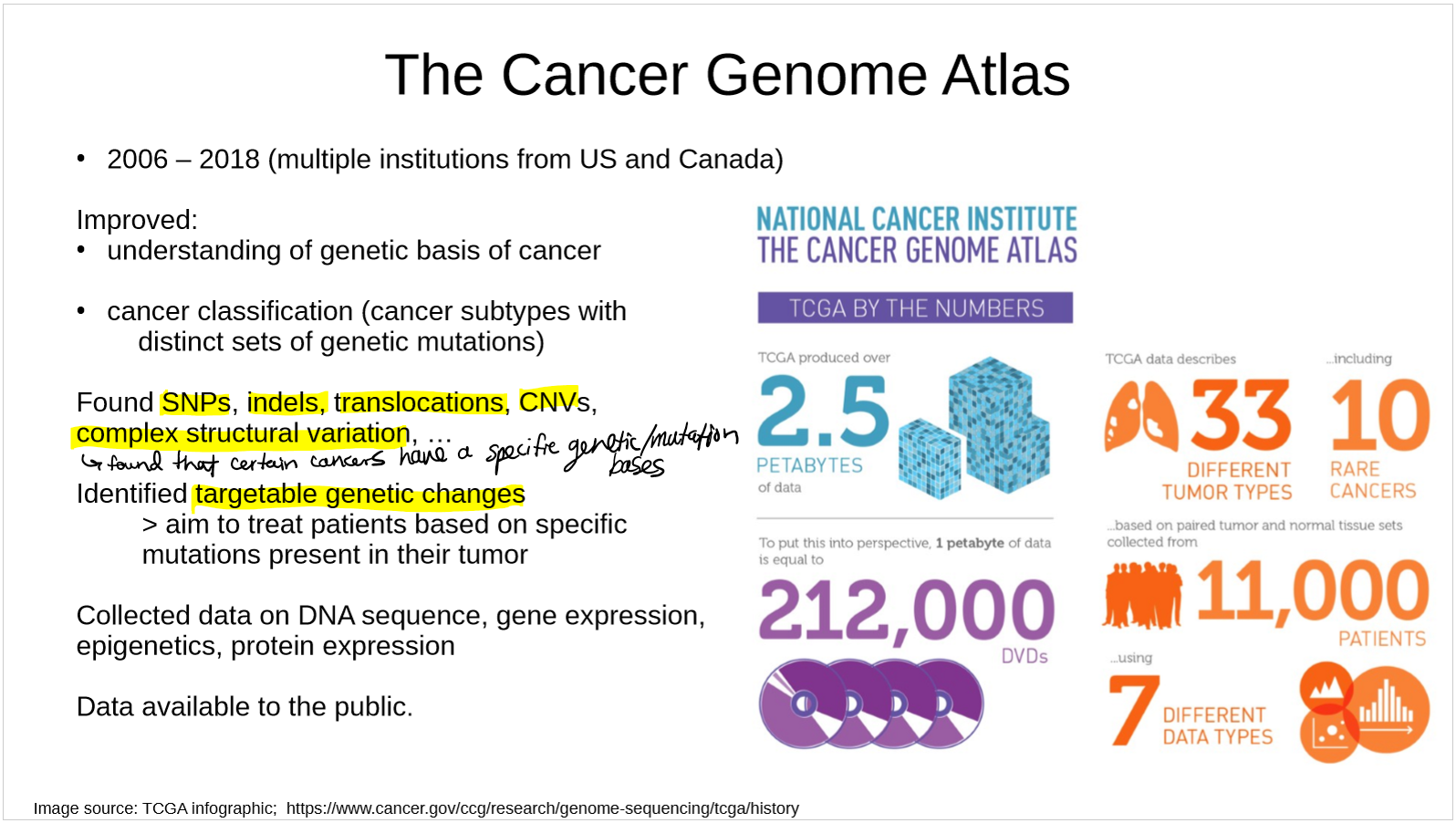
describe how cancer and age are related
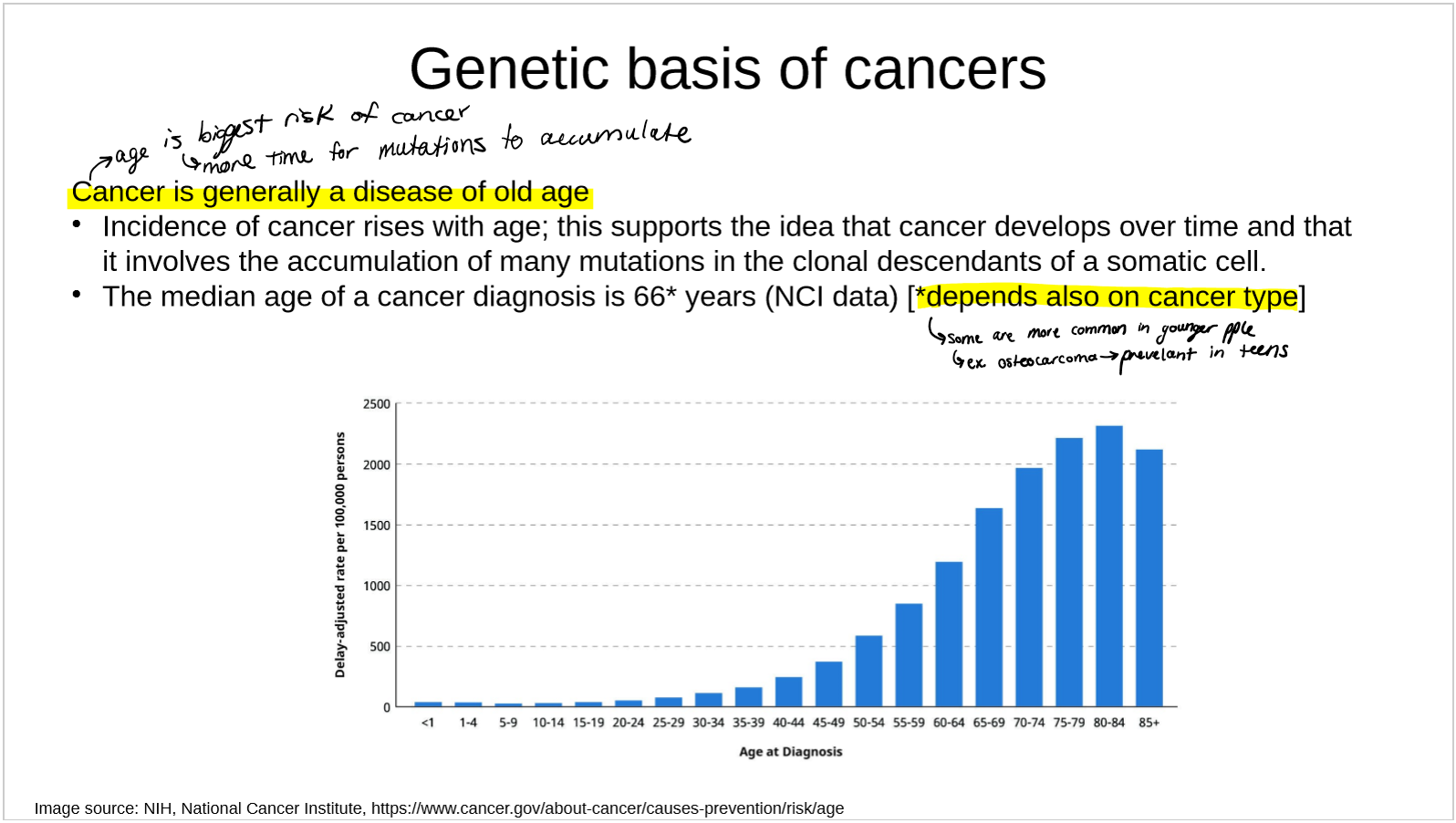
describe how the environment causes cancer
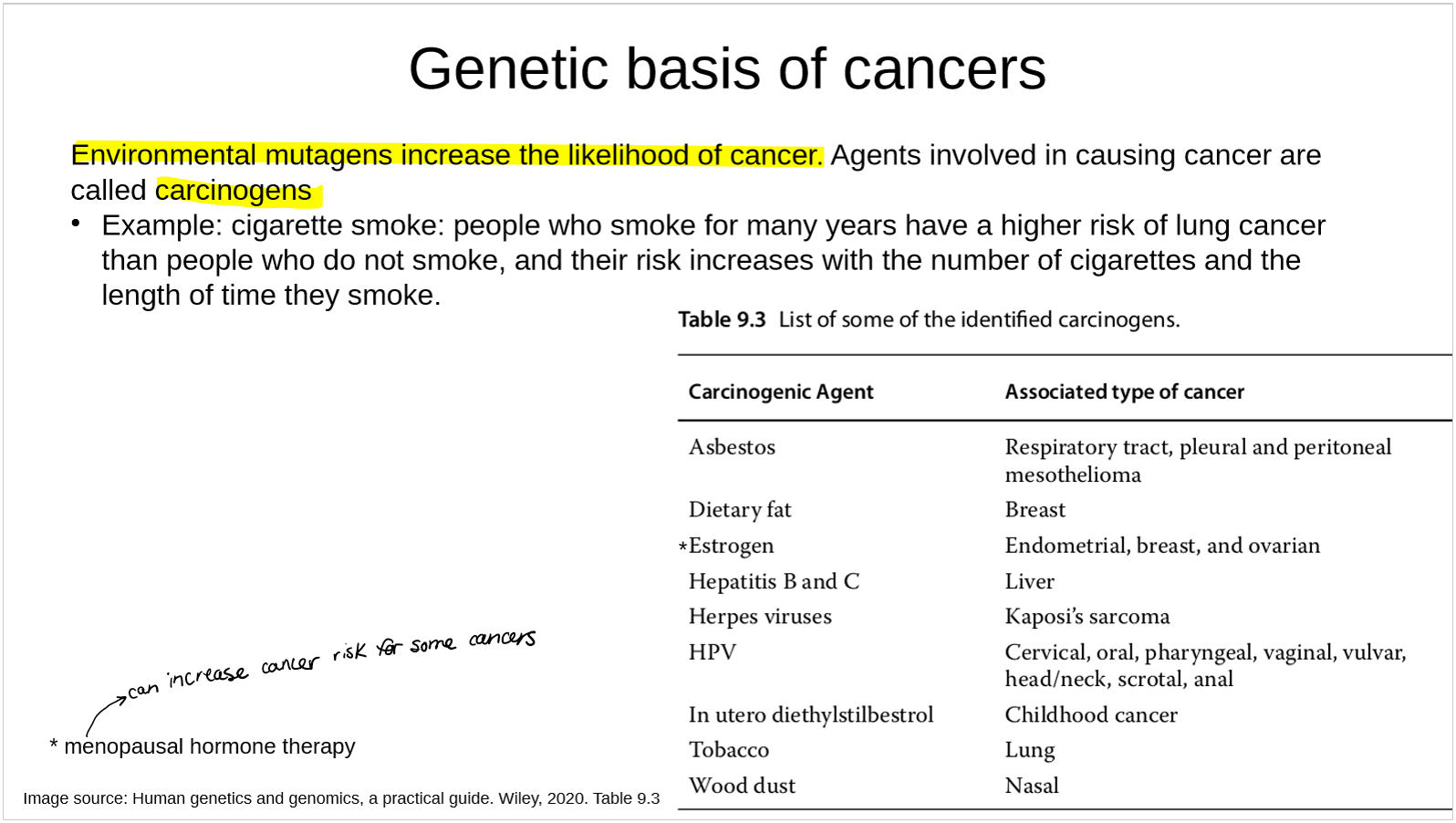
what are passenger mutations
occur due to increased mutation rate of cancer cells
not recurrent in particular cancer types
do not contribute to disease
99% of mutations in cancer cells are passenger mutation
what are driver mutations?
(usually only a few) cause cancer phenotypes
● example: colon cancer cells have thousands of mutations not found in normal cells of the same person. 60-70 of these change open reading frames of genes. Of these 3-10 are likely to be driver mutations.a single-driver mutation is usually not enough to cause cancer. Several driver mutations in different genes must accumulate for cancer to develop
how do cancers of the same tissues from different pts compare?
Cancers of the same tissue from different patients accumulate different driver and passenger mutations
what are the different types of driver mutations
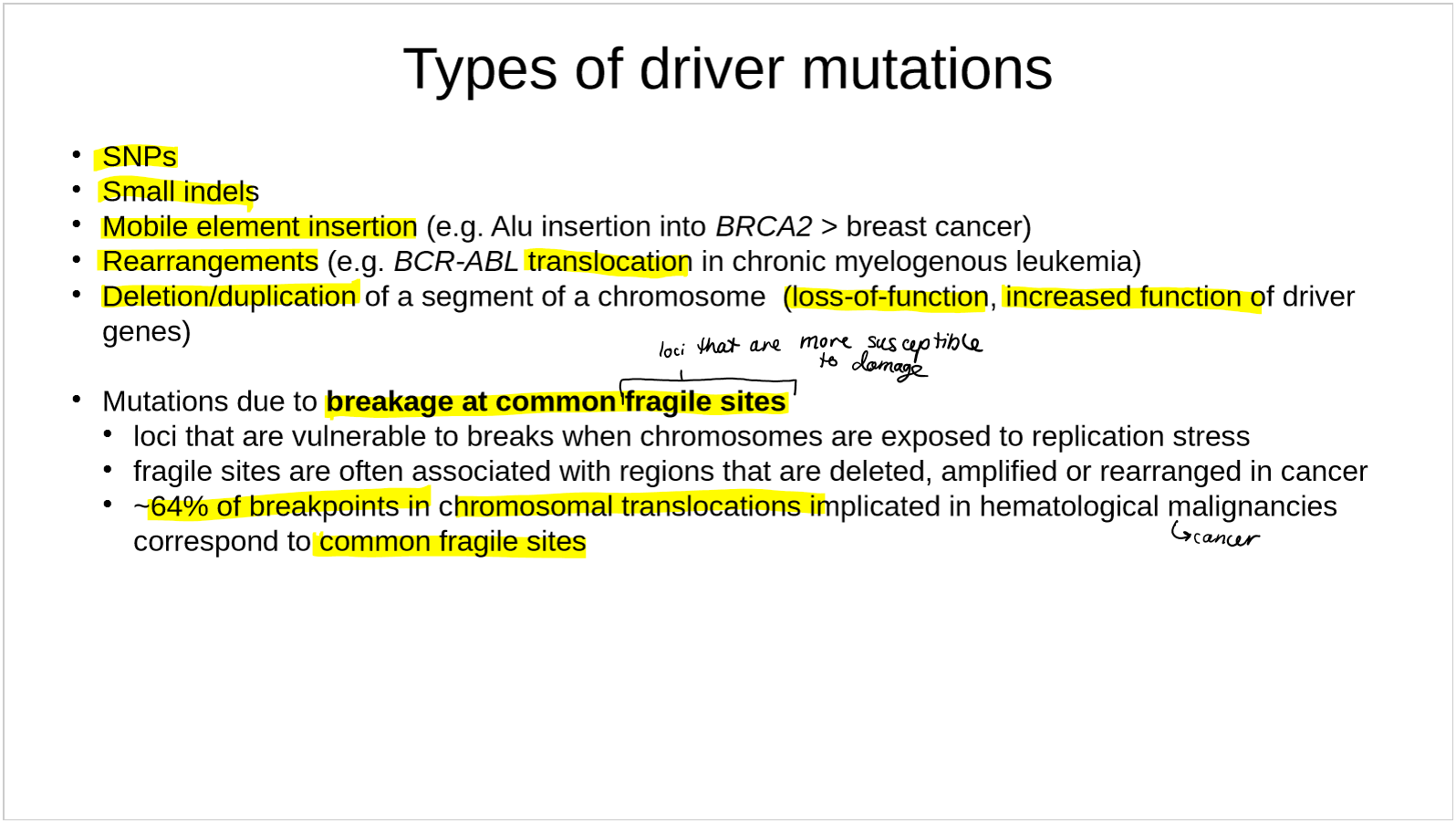
describe how mutations due to breakage at common fragile sites cause cancer
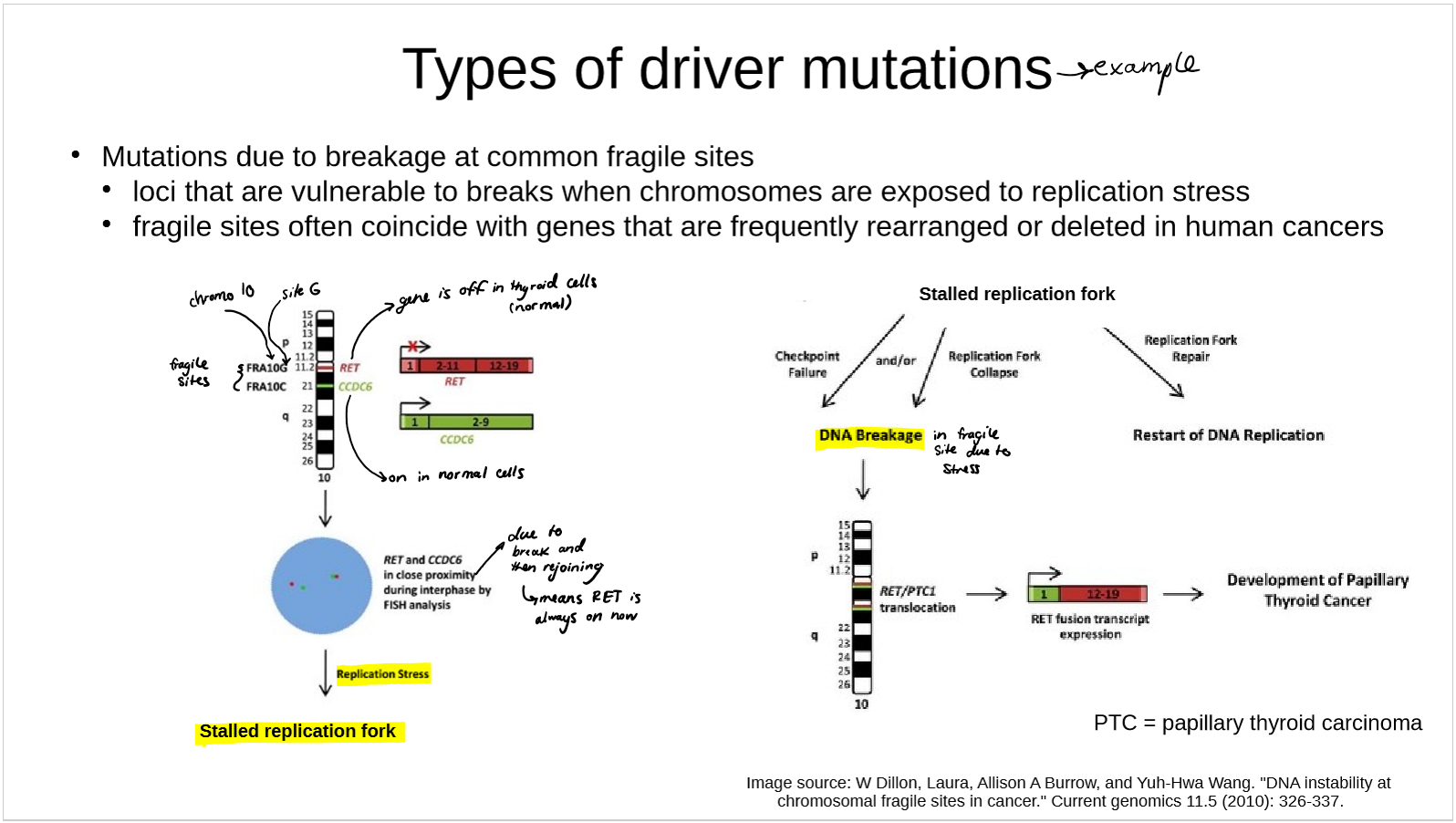
describe how mutations due to chromosome shattering cause cancer
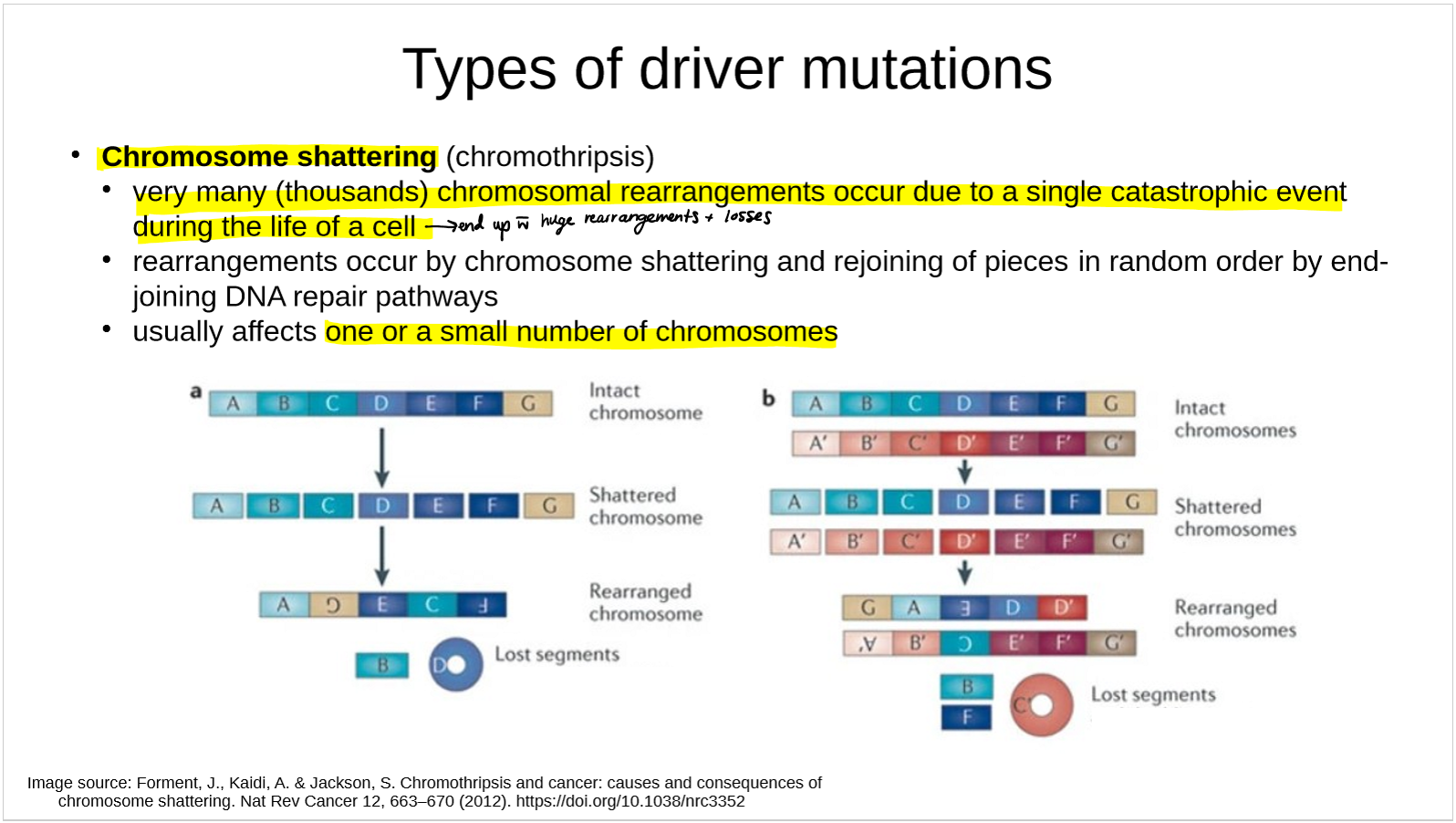
describe an examples of chromosome shattering
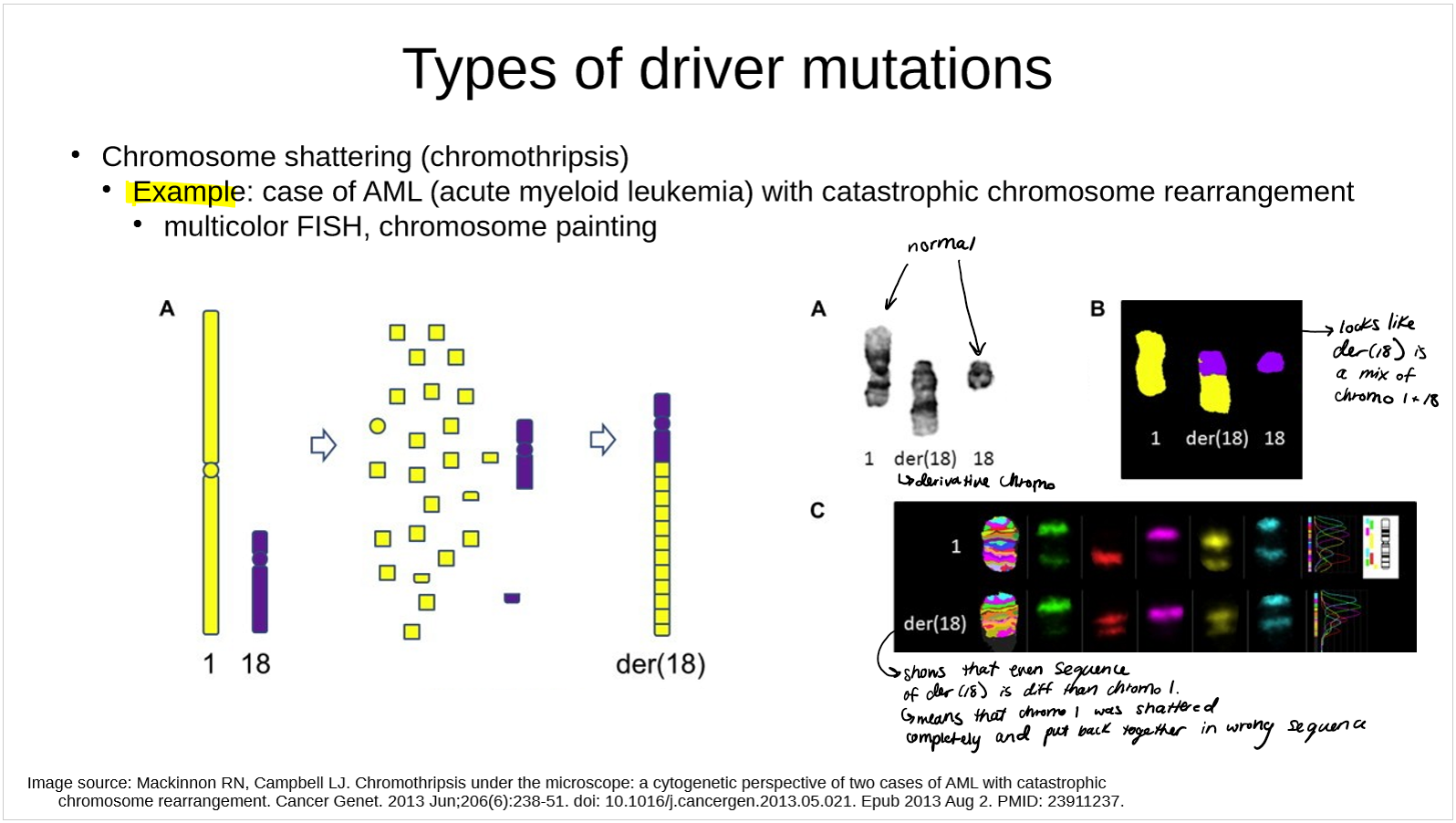
what are cancer genes?
mutant alleles that lead to cancer
name the two classes of cancer genes
proto-oncogenes
tumor-suppressor genes
describe how proto-oncogenes become cancer genes
Genes whose mutant alleles act in a dominant manner to promote cancer are proto-oncogenes (only need one mutated allele)
Mutant alleles of these genes are oncogenes
Proto-oncogenes often encode proteins needed for cell-cycle progression; oncogenic mutation increases gene expression or enhances the gene product’s efficiency (faster cell cycle progression).
Oncogenic mutation is a gain-of-function mutation → either more function or new function
One oncogene is sufficient to help cause a cancer-related phenotype > typically dominant allele
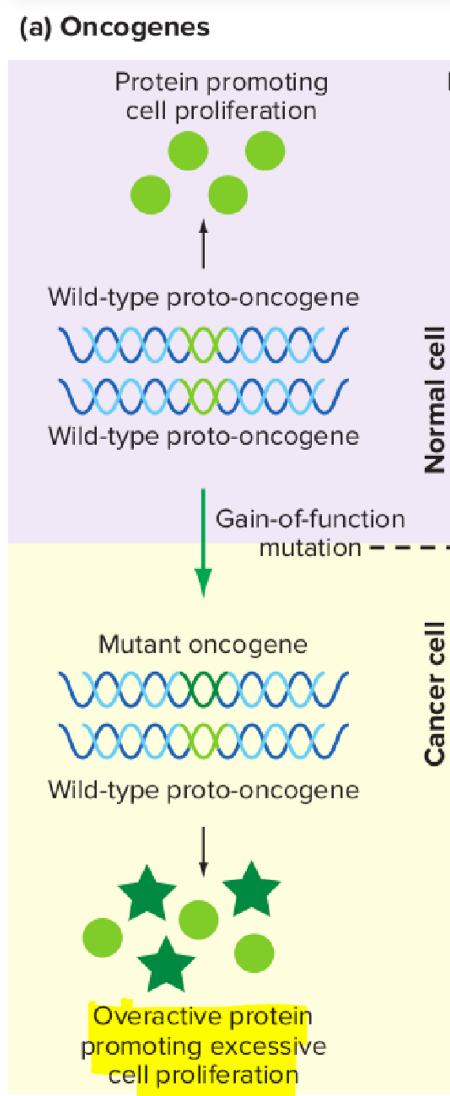
describe how tumor-suppressor genes become cancer genes
Genes whose mutant alleles act in a recessive manner to promote cancer are tumor-suppressor genes
Encode proteins that slow down cell division or protects against genome instability
Mutations in tumor-suppressor genes are loss-of-function → can be partial or complete loss
One mutated allele of a tumor suppressor gene does not directly cause cancer, but it increases the risk of developing cancer → need mutations in both alleles to cause cancer
Both copies of a tumor-suppressor gene must be mutant to make the cell abnormal > typically recessive alleles
When both copies are inactivated cell proliferates faster or accumulates mutations faster (or both)
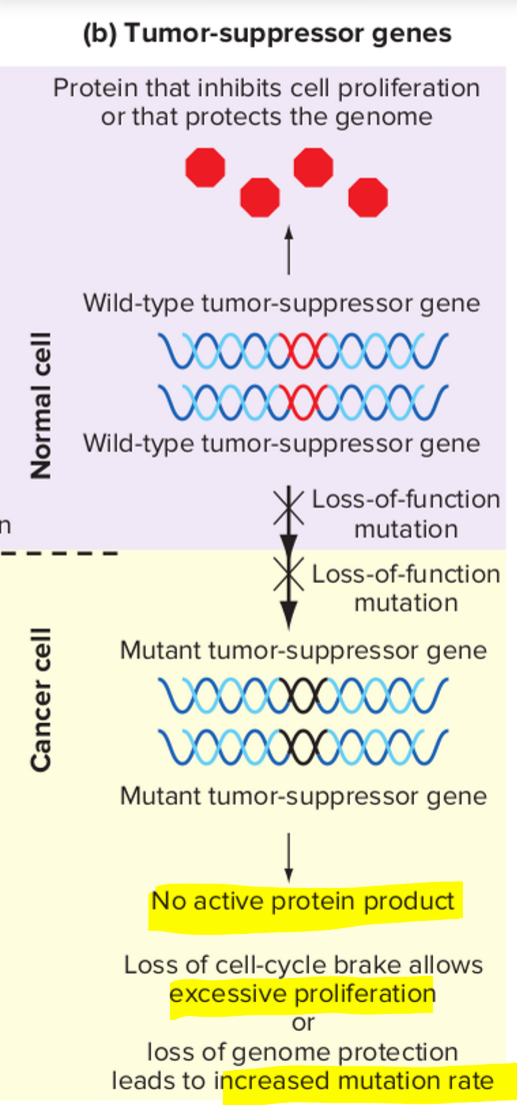
how are oncogenes and tumor-suppressors related?
Oncogene and tumor-suppressor gene mutations are driver mutations. Most cancers require accumulation of multiple mutations in both classes
mutations in both oncogenes and tumor suppressor genes
describe the location of driver mutations in the body
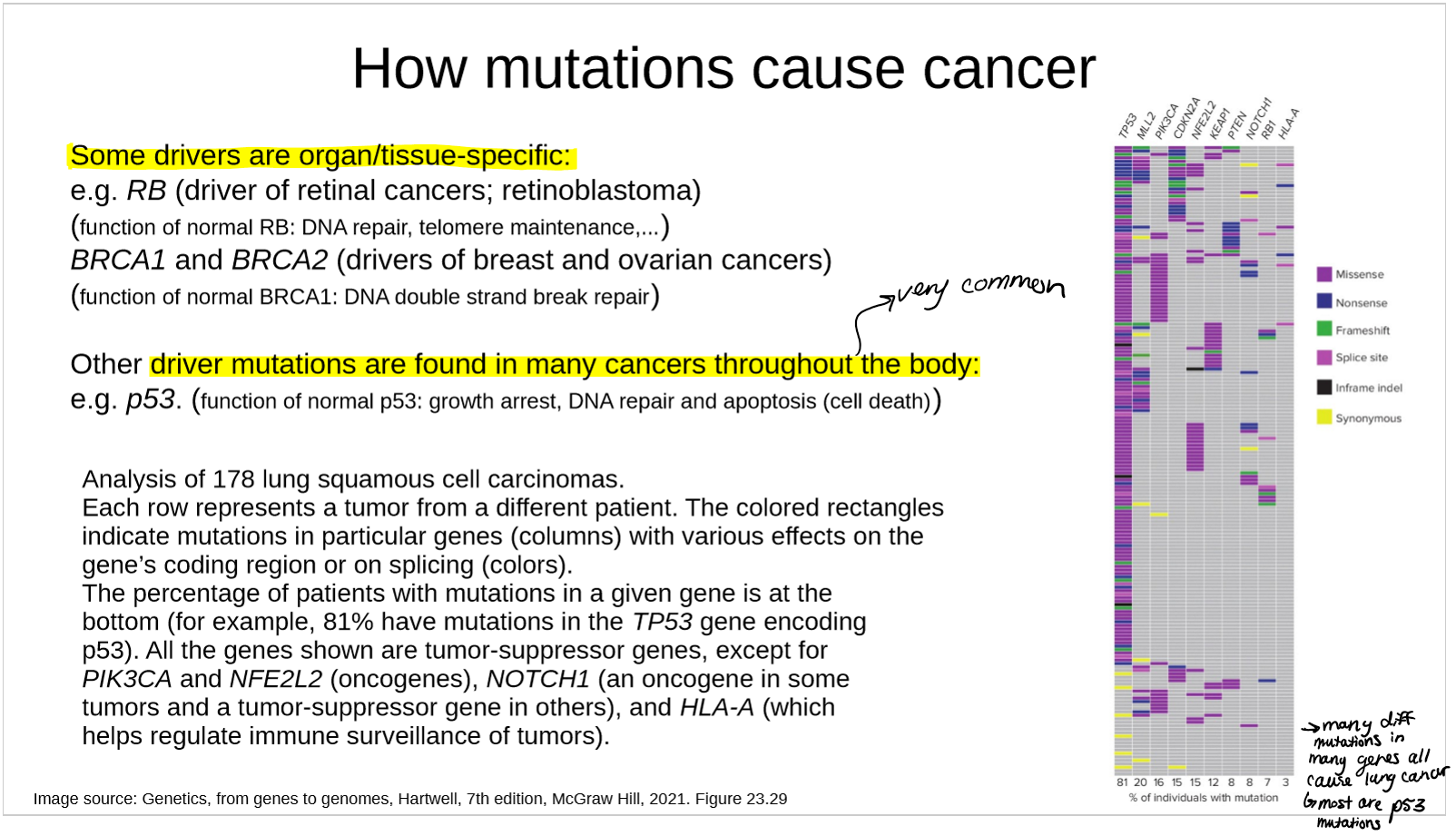
can the same type of cancer be caused by different mutations? (in different people, in different cells)
yes
describe how point mutations convert a proto-oncogene into an oncogene
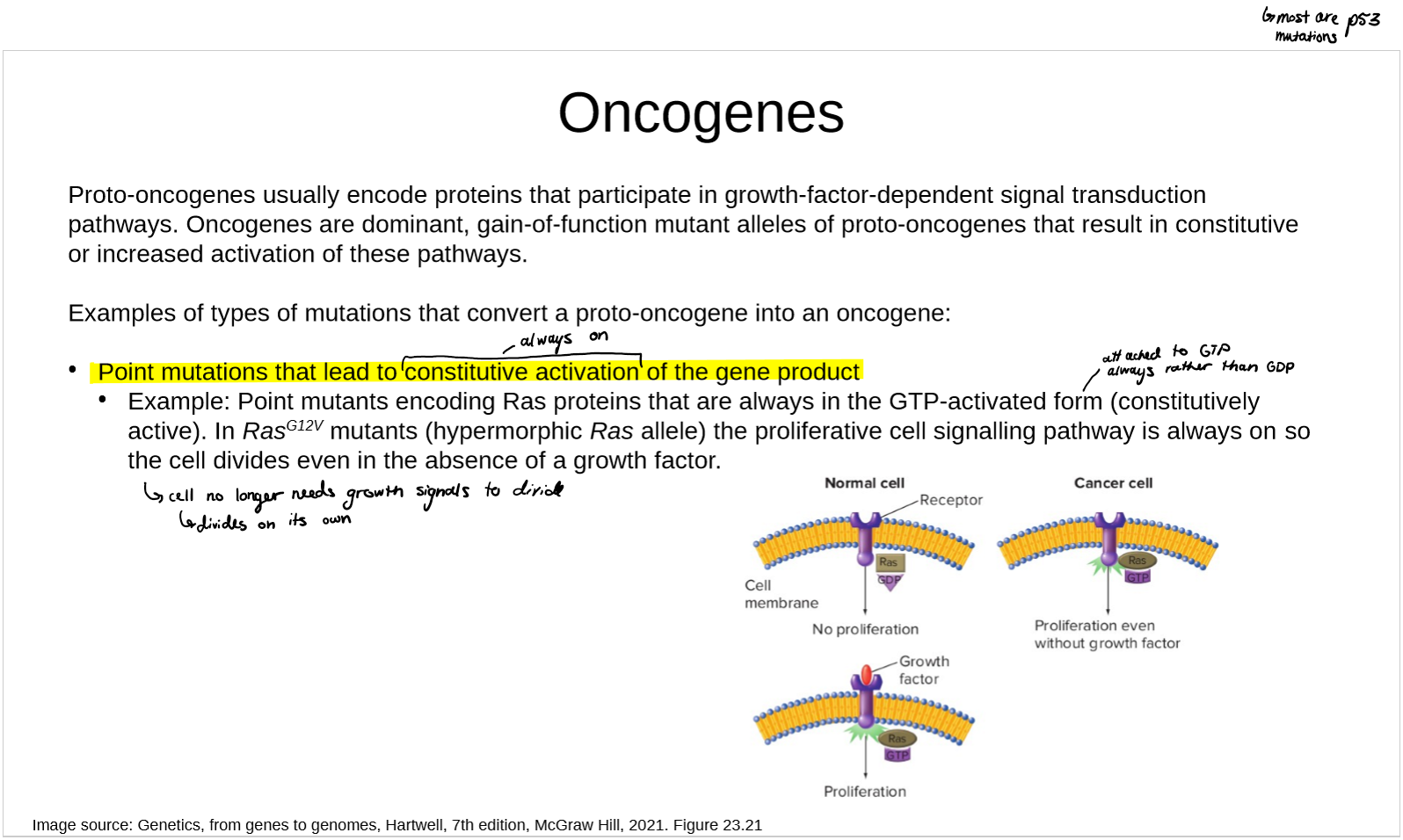
describe how placement of a viral gene converts a proto-oncogene into an oncogene

describe how formation of a novel chimeric gene due to translocation converts a proto-oncogene into an oncogene
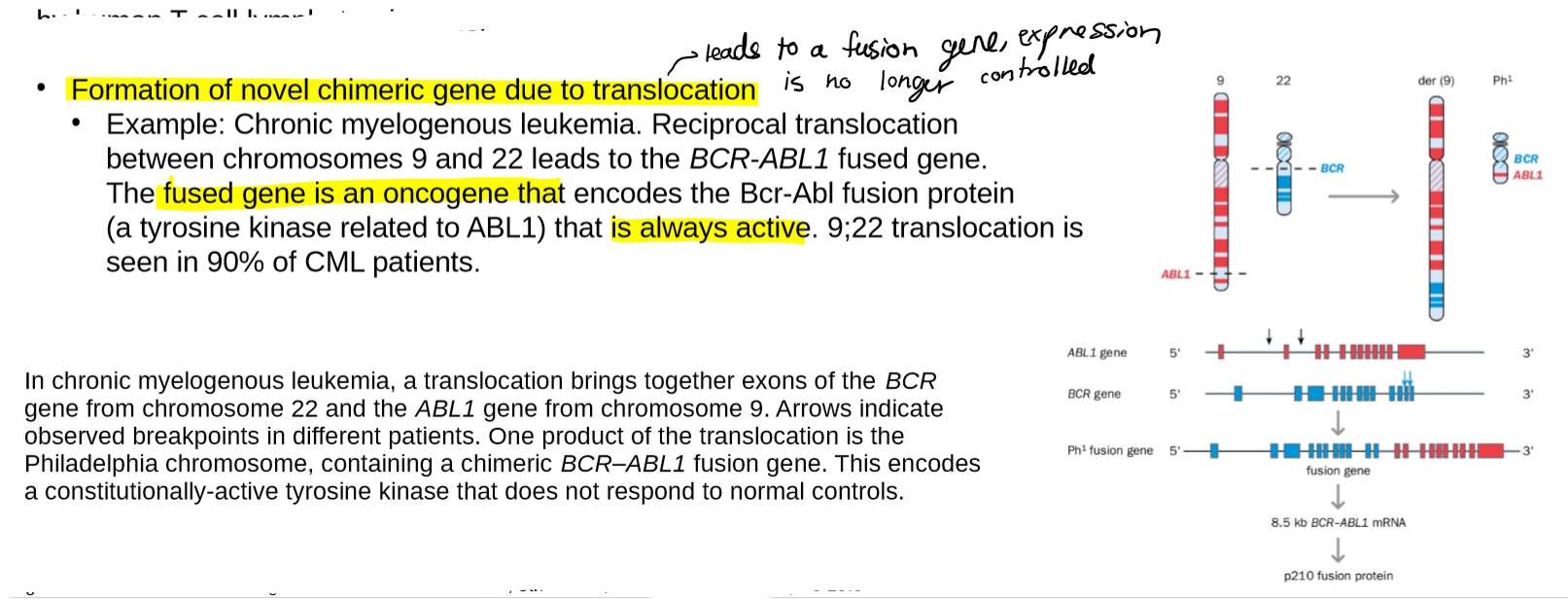
describe how placement of proto-oncogene next to a highly transcribed gene converts a proto-oncogene into an oncogene
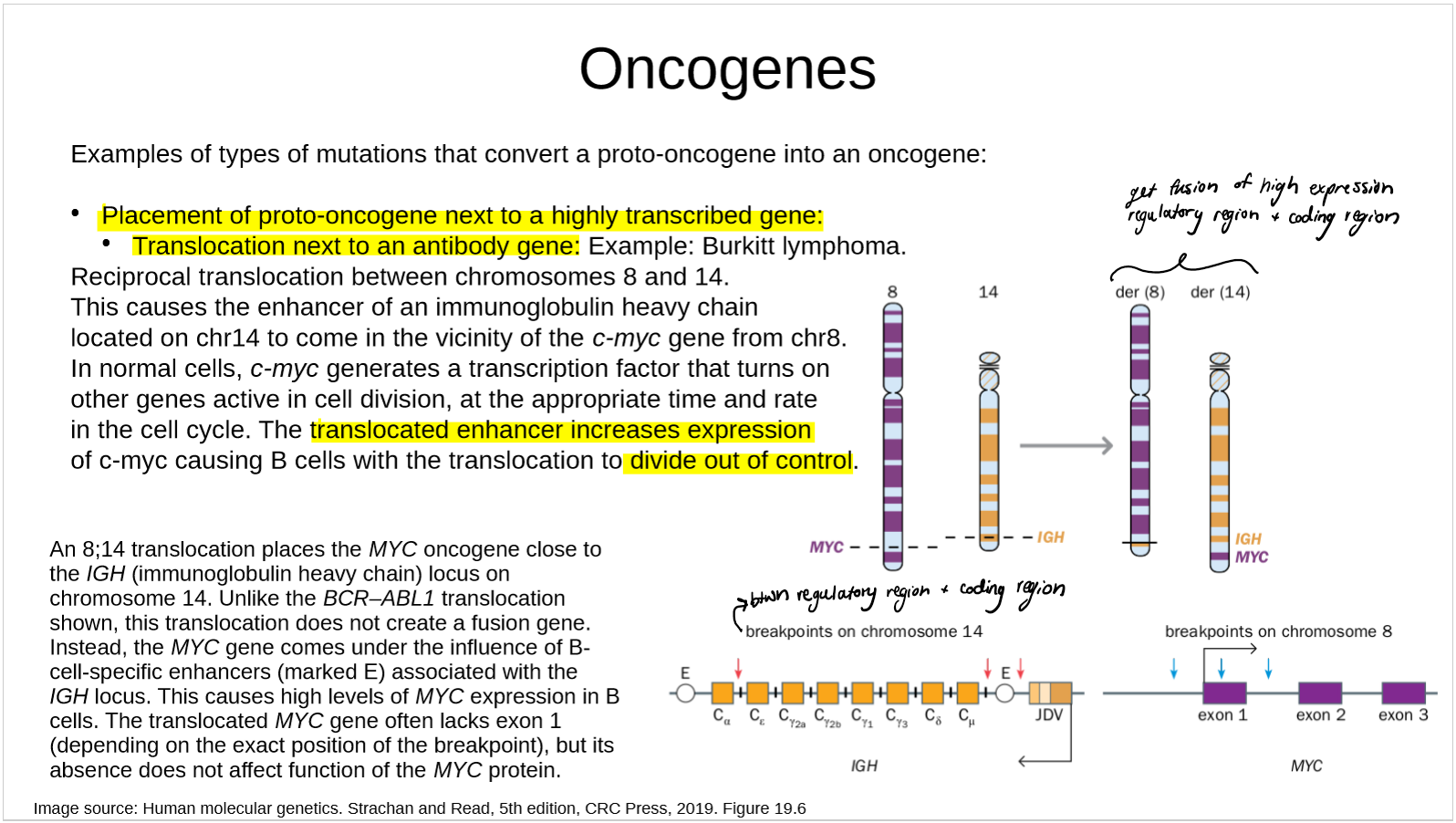
describe how increase in gene copies converts a proto-oncogene into an oncogene
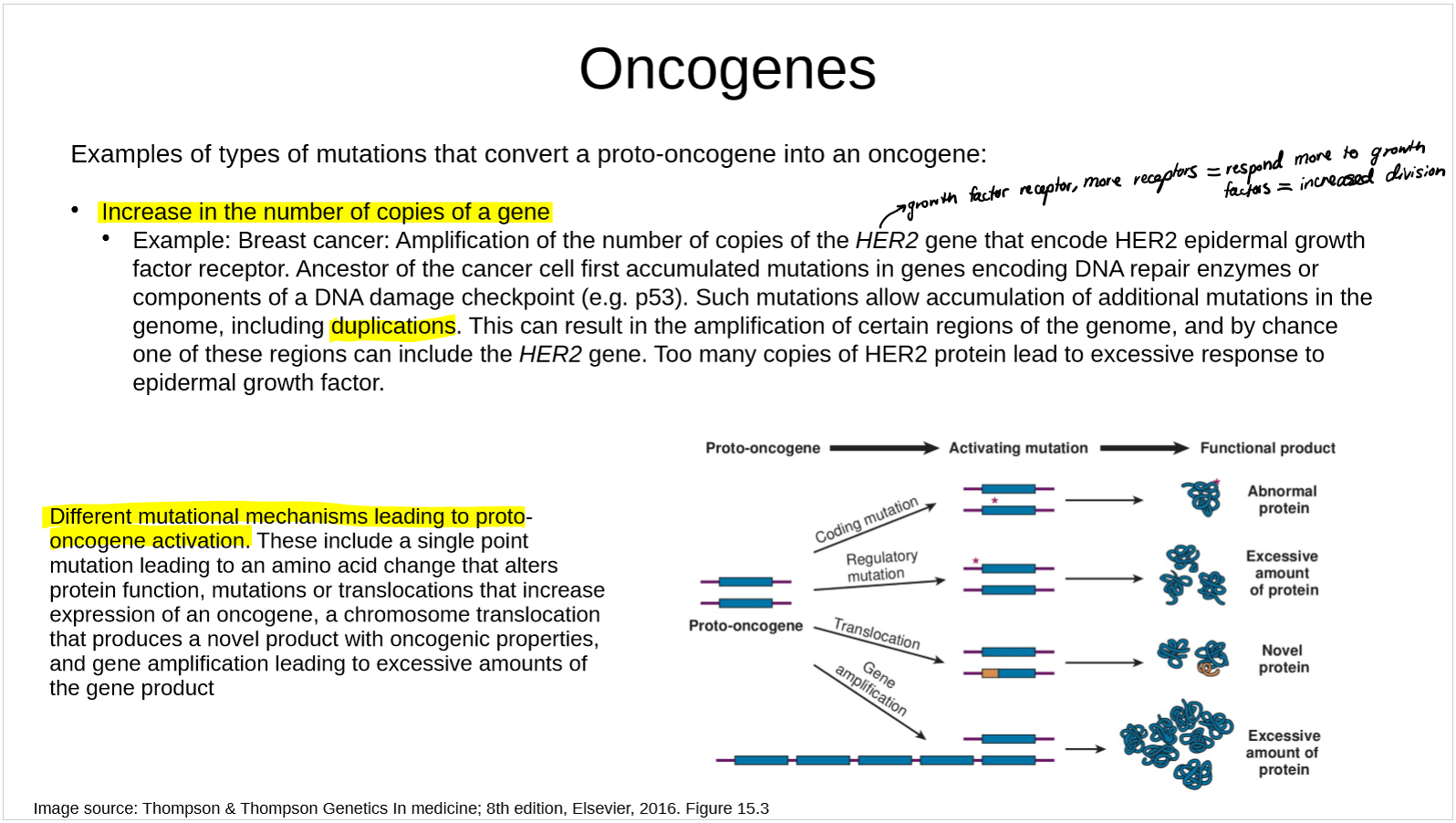
compare and contrast inherited and sporadic cancer
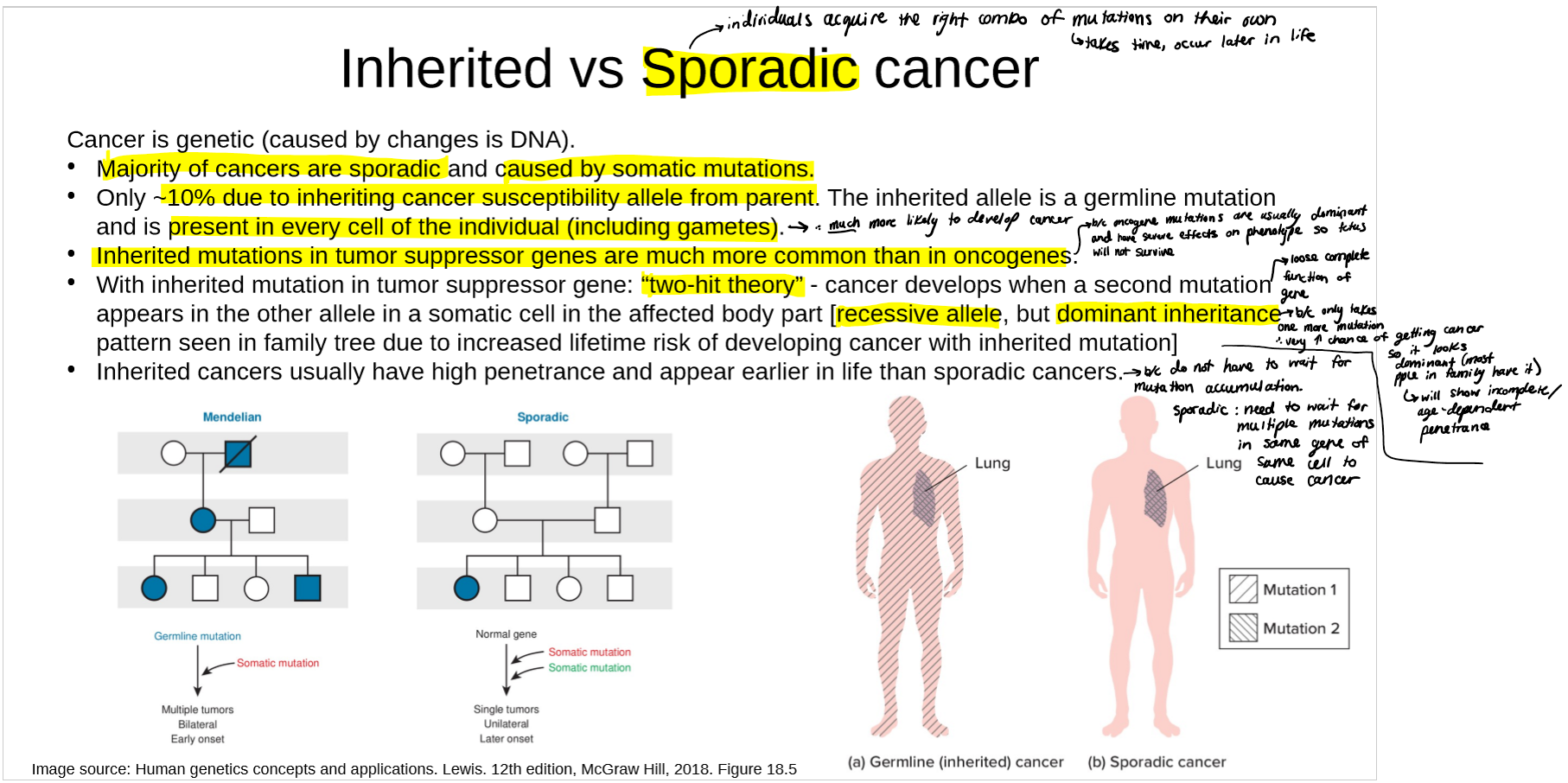
describe the two hit-theory
first hit/inherited allele predispositions an individual to develop cancer but will not cause cancer
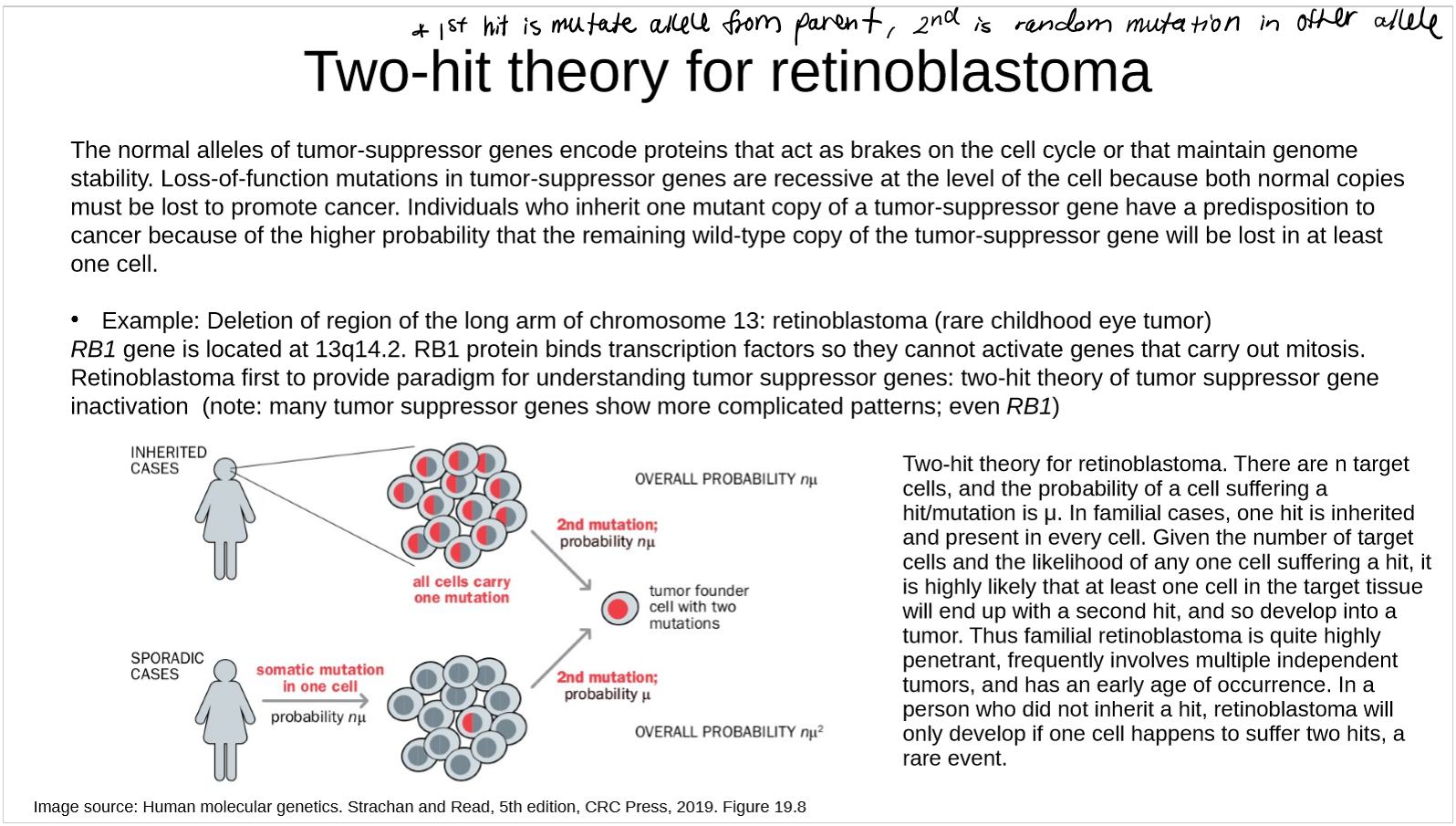
describe the mechanisms of the two-hit theory
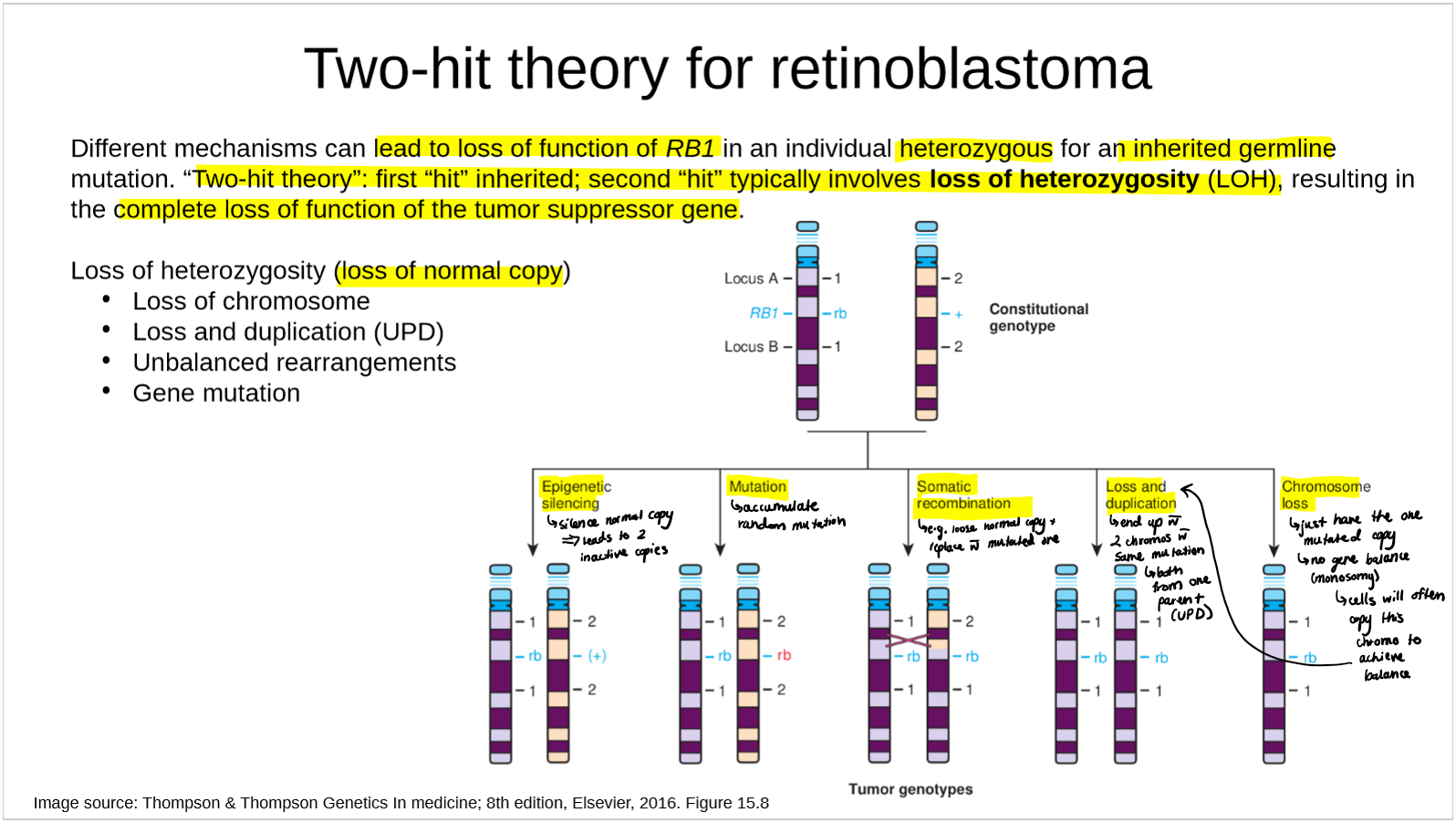
describe how epigenetics related to cancer
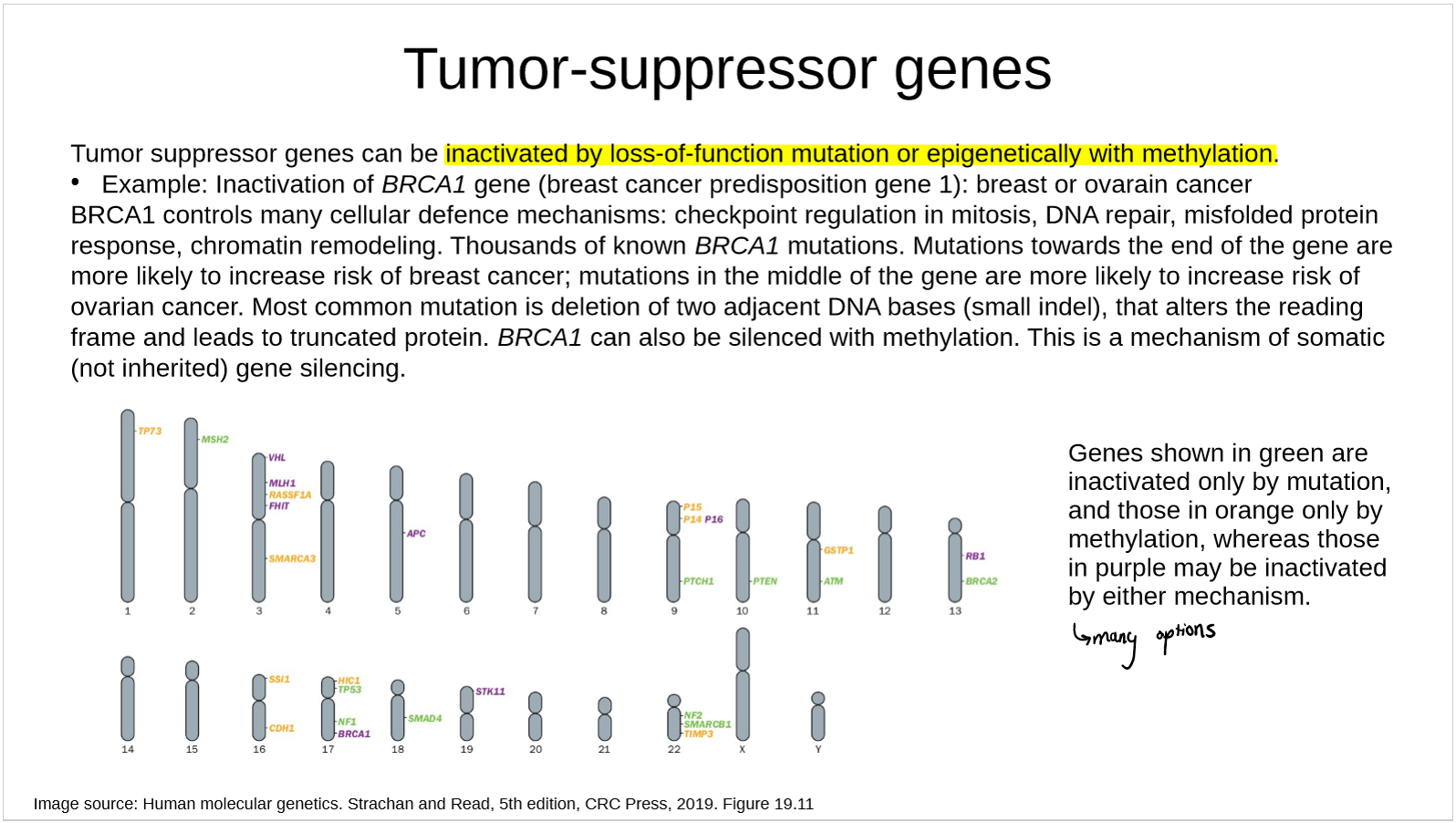
describe hereditary paraganglioma and genomic imprinting
